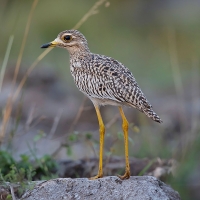
The Spotted Thick-Knee (Burhinus capensis) is one of the rare resident breeding birds in the Kingdom of Saudi Arabia. It appears in the southern Tihamah plains and the low slopes south of Jeddah Governorate in Makkah al-Mukarramah Province . Malaki Lake near Wadi Jazan Dam in Jazan Province is among its active habitats in Saudi Arabia. The total number of breeding pairs Saudi Arabia reaches one hundred annually. Behavior of the Spotted Thick-Knee The Spotted Thick-Knee has an almost complete pa...
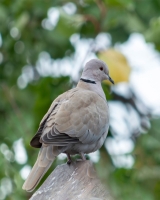
It is one of the five most common birds in the Kingdom of Saudi Arabia . It is found in its governorates and cities and is a common breeding resident bird. Before 1960, it was found within two or three isolated groups before expanding its presence in Saudi Arabia, where it was found in Jeddah Governorate , Makkah al-Mukarramah Province , in 1987, ultimately becoming one of Saudi Arabia's most common birds. Saudi Arabia has become a habitat for around 1.5 million breeding pairs of African C...
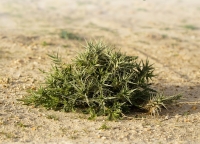
As-Siha' Shrub (Blepharis ciliaris), or as-Saha, is a thorny annual or potentially perennial plant. It belongs to the Acanthaceae family and is widespread across the regions of the Kingdom of Saudi Arabia , particularly on coarse rocky slopes at elevations up to 1,800 m. Alternative names for as-Siha' shrub In various local environments, as-Siha' shrub is known by several names, including: ''al-Isha',' 'al-Shawkah,' 'al-Naqi',' 'S...
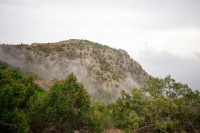
Juniper trees grow on the slopes of Sarawat Mountains in the Kingdom of Saudi Arabia, particularly in the highlands of Aseer Province , including as-Sudah Mountains, which rise about three thousand m above sea level, and the al-Sahab Park in Abha City . These trees are dense in the northern parts of the province and form forests that regenerate naturally through seeds. Juniper trees are perennial, evergreen, and shade-providing trees that grow in cold regions. They have a refreshing scent due t...
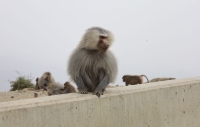
The Baboon is a monkey belonging to the Cercopithecidae family, which is native to Africa and Asia. In the Arabian Peninsula, only one species is found, inhabiting the western and southwestern regions. It is believed that it arrived in the Arabian Peninsula before the formation of the Red Sea basin. This monkey is found in the western and southwestern parts of the Kingdom of Saudi Arabia. The Cercopithecidae family includes monkeys with long tails, others with short or reduced tails, round face...
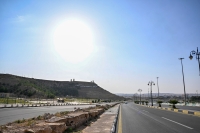
Al-Kasr Lake is located in al-Zulfi Governorate, one of the governorates within Riyadh Province in the Kingdom of Saudi Arabia. The lake stretches amidst the sands of al-Nufud Desert , approximately 250 km from Riyadh City. It forms when rainfall accumulates on the sands of the al-Kasr area, creating a stunning landscape where the peaks of dunes resemble small islands within a vast sea. Viewed from above, the lake appears like an ocean merging sand and water. Al-Kasr Lake is a popular tourist d...
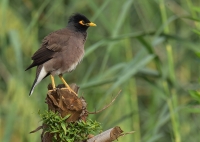
Invasive Non-Native Birds in the Kingdom of Saudi Arabia are globally classified as invasive components of the new ecosystems they have entered. These species pose a threat to biodiversity when they spread beyond their natural distribution range. A total of eleven bird species have been identified in Saudi Arabia through bird population monitoring and distribution tracking conducted by the National Center for Wildlife . Assessment of invasive non-native birds in Saudi Arabia The National Center...
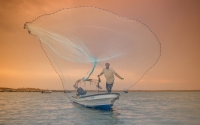
Al-Kannah is a popular fishing season in Jazan Province in the Kingdom of Saudi Arabia . It extends from mid-April to the end of June. It is characterized by the abundance and quality of fish, especially narrow-barred Spanish mackerel (Scomberomorus commerson), known locally as al-Kinaad . The province's fishing seasons vary depending on the type of fish . For instance, the coral trout (Plectropomus leopardus) and al-Taradi fish season starts in July and lasts until the end of February, wh...
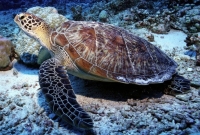
Turtles in the Kingdom of Saudi Arabia are amphibious animals with a short, broad body and slow movement. They are encased in a bony shell consisting of two shields: the carapace, which is a domed dorsal shell, and the plastron, which is a flat ventral shell. These shells have openings that allow the turtle to extend its front and hind limbs, head, and tail. The turtle's slow movement is attributed to the weight of its protective bony shell. Turtles are long-lived creatures, with some spec...
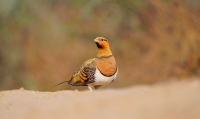
The Chestnut-Bellied Sandgrouse , also known as the common sandgrouse (Pterocles exustus), is a common resident and breeding bird in the Kingdom of Saudi Arabia. The Kingdom houses two of its known subspecies, including the (Pterocles Exustus Erlangeri), residing southwest of the Kingdom. It annually breeds in the Kingdom where the country has become a habitat for around twenty thousand pairs. Areas of active presence of the chestnut-bellied sandgrouse in Saudi Arabia The chestnut-bellied sandg...
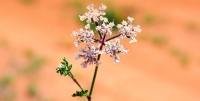
Al-Bisbas (Commonly known as Rat's Ear) (Commelina forskaolii Kunth) is a herbaceous species that grows in certain environments in the Kingdom of Saudi Arabia. It is classified as an annual herb belonging to the Commelinaceae family. The plant reaches a height of forty cm and has lobed leaves, umbellate inflorescences, and white flowers. Characteristics of al-Bisbas plant Al-Bisbas plant is distinguished by its pleasant aroma and leaves that taste similar to carrots. A single stem is cal...
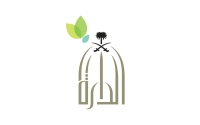
Green Darah Initiative (GDI) was launched by the King Abdulaziz Foundation for Research and Archives (Darah ) in Riyadh City on May 23, 2021, as part of the Crown Prince and Prime Minister, His Royal Highness Prince Mohammed Bin Salman Bin Abdulaziz Al Saud's initiatives: 'Saudi Green' and ' Middle East Green .' GDI aims to achieve its goals through practical measures that have been implemented. GDI Goals Green Darah Initiative seeks to provide scientific, historical, a...